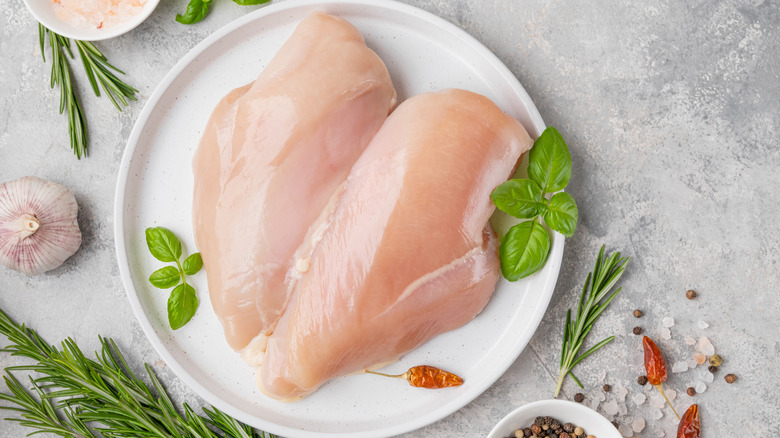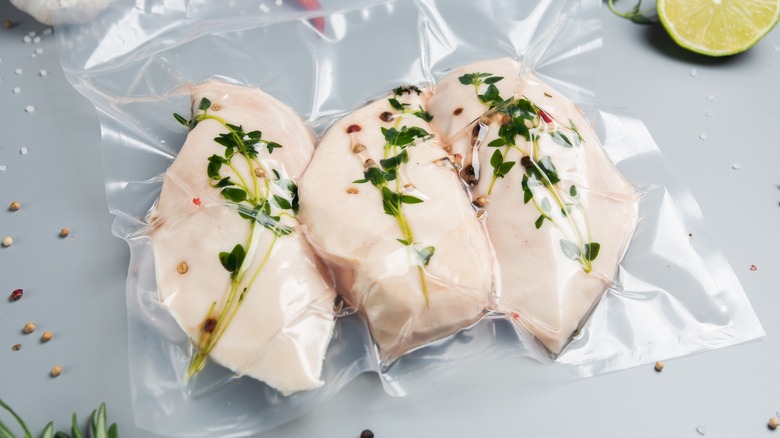How To Sous Vide Chicken Breast While Keeping It Tender And Juicy
Sous vide, a French term meaning "under vacuum," has transformed the way chefs cook foods evenly while retaining their natural flavors and textures. It's especially useful for notoriously tricky ingredients like chicken breast. This beloved cut can dry out easily, so it demands precise heat control to remain tender. By sealing the chicken in a vacuum bag or a food-safe resealable plastic bag, immersing it in water, and maintaining a steady temperature, sous vide delivers controlled heat from edge to center. The result? Perfect chicken breast with every bite as succulent as the last.
John Warr, executive chef at FireLake Grill House & Cocktail Bar located in the Radisson Blu Mall of America, strongly advocates for sous vide cooking. If you've ever wondered if it's safe to sous vide chicken, the answer is yes — as long as it's prepared at the right temperature for the proper length of time. Chef Warr recommends a precise 160 degrees Fahrenheit and a cooking time of 90 minutes to two hours for sous vide chicken breast. "At this temperature, the chicken retains moisture and comes out perfectly cooked without any dryness," Warr explains.
As a rule of thumb, you should never sous vide chicken for less than one hour or more than four hours. Although this may seem like a slow process, the results are worth the wait. The meat reaches ideal doneness as the proteins gently denature without losing excess moisture. In other words, the fibers stay soft, avoiding a tough or stringy quality.
What should you include in the sous vide bag?
One of the most alluring aspects of sous vide cooking is its versatility. FireLake Grill House & Cocktail Bar's chef John Warr suggests adding herbs, garlic, citrus, and butter to the bag along with the chicken. When tucked inside the bag, these ingredients gradually release their aromas, creating a micro-environment that allows compounds to permeate the chicken. This setup has the power to transform any chicken breast recipe you'll make over and over (such as chicken enchilada soup, chicken fajitas, or creamy chicken carbonara) into a beautifully aromatic dish.
Beyond flavor, sous vide cooking also ensures a uniform consistency throughout the meat, eliminating the common issue of overdone edges and underdone centers that can occur with some conventional methods. Lastly, if you crave a touch of crispness, a quick sear in a hot skillet after sous vide cooking imparts a caramelized crust that complements the juicy interior. Just be sure to avoid the mistakes everyone makes with sous vide cooking, including not fully submerging the bag or using too much seasoning.

